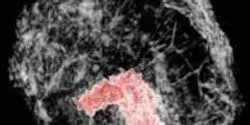Cancer Detection

Testing for ovarian cancer or the presence of a particular chemical could be almost as simple as distinguishing an F sharp from a B flat, thanks to a new microscopic acoustic device that has been dramatically improved by scientists at the U.S. Department of Energy’s (DOE) Argonne National Laboratory.

As children, it was fascinating to put a flashlight up to our palms to see the light shine through the hand. Washington University in St. Louis engineers are using a similar idea to track movement inside the body’s tissues to improve imaging of cancerous tissues and to develop potential treatments.

A computer model study reveals – for the first time – details of an energy-creating process vital and unique to cancer cells. The research holds promise for new interventions and for personalizing cancer treatments based on individual needs.

Bioengineers at the University of Rome Tor Vergata and the University of Montreal have used DNA to develop a tool that detects and reacts to chemical changes caused by cancer cells and that may one day be used to deliver drugs to tumor cells.














